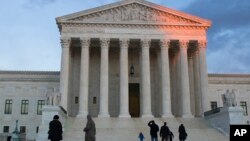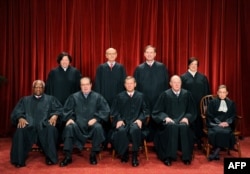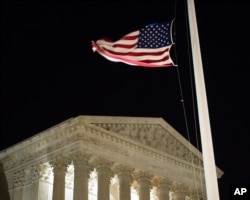The death of U.S. Supreme Court Justice Antonin Scalia brought calls from conservatives for President Barack Obama to not nominate a replacement during his last year in office, but doing that would leave an open seat for an unusually long time.
Their hope is that a Republican will win the November election, allowing for a more conservative justice, like Scalia, to take the seat and preserve the narrow majority currently in the court.
But by waiting for the next president to take office in January 2017, Scalia's seat would be vacant for at least 342 days.
High court history
In the past century, 10 other sitting justices have died, and it took an average of 95 days for their replacement to be confirmed. The longest vacancy was 192 days between the death of Justice Benjamin Cardozo and the confirmation of Justice Felix Frankfurter in 1939.
With only eight justices on the bench, there is a greater possibility for 4-4 ties, and in those cases the ruling of the lower court stands without setting any precedent for judging future cases. Most modern justices retire, giving a president ample time to nominate a replacement and have them confirmed by the Senate before the justice actually leaves the court.
Justice Scalia's death quickly became an issue ahead of the November presidential vote, but there are examples of deceased justices being replaced in an election year. In 1916, Justice Louis Brandeis was confirmed to take the place of the late Justice Joseph Rucker Lamar, and in 1940 Justice Frank Murphy filled the seat left by Justice Pierce Butler.
The stakes for naming a justice are high since the position is a lifetime appointment. Republicans do not want Obama, a Democrat, to have his more liberal vision carried out in court cases for potentially decades by a new justice.
Obama's considerations
Fourteen justices have been confirmed in U.S. presidential election years; the latest in 1988 when Justice Anthony Kennedy joined the court. Eight of the election-year confirmations happened before 1900.
Obama could wait until December to make a nomination to the court and have some precedent in American history among leaders about to leave office.
Three consecutive presidents in the mid-1800s Andrew Jackson, Martin Van Buren and James Polk each sent Supreme Court nominations to the Senate in their final six weeks in office, and all three were approved.
Jackson's example is the most extreme. On his final day as president in 1837 he nominated John Catron to take a new seat on the expanded court. The Senate voted to confirm Catron several days after Van Buren took office.











